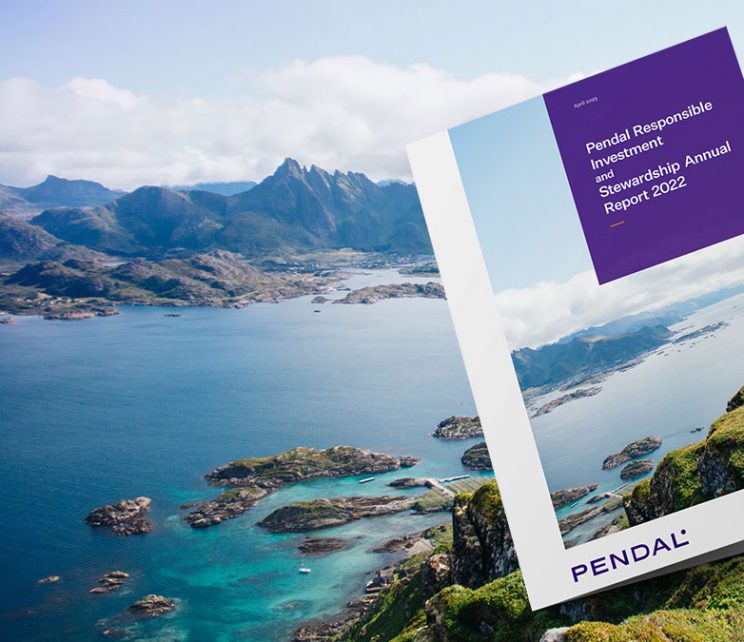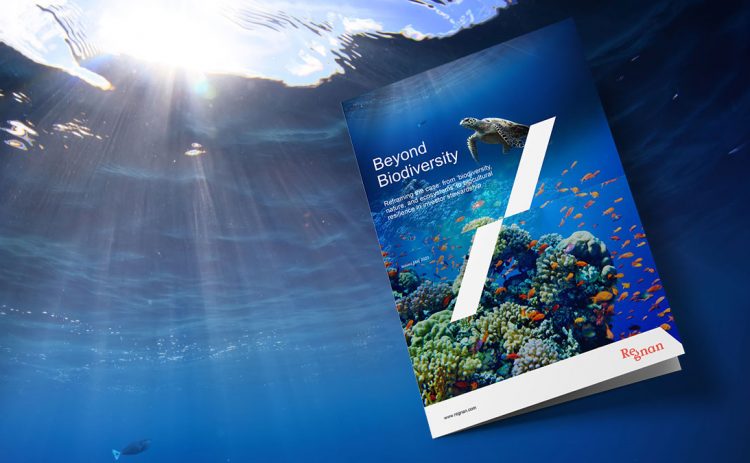
Mainstream Online Web Portal
LoginInvestors can view their accounts online via a secure web portal. After registering, you can access your account balances, periodical statements, tax statements, transaction histories and distribution statements / details.
Advisers will also have access to view their clients’ accounts online via the secure web portal.
The Point
Quick, actionable insights for investors
Responsible Investments

ESG is not enough. Investors must work together to protect the planet, says Regnan
Protecting the integrity of natural systems require policy intervention – and investors should advocate for a more holistic and inclusive regulatory approach.
That’s the view of Regnan’s Oshadee Siyaguna who has developed a new framework which explores why conservation efforts have historically failed to achieve their goals – and what the investment community can do about it.
The framework is outlined in a report called Beyond Biodiversity which can be downloaded here.
“Advocacy has to be top of the list for investors,” says Osh, a thematic Investing analyst with sustainable investing leader Regnan.
“Essentially, that means investors standing up and saying policy has not been adequate.
“It’s very clear that it needs to be policy led because as soon as policy changes, everything else will start to fall in line.”

ESG: Regnan launches investor guide to managing biodiversity risks
Quick view
ESG: Regnan launches investor guide to managing biodiversity risks
Most investors are now aware of climate change risks.
But biodiversity loss is fast emerging as the next big concern for investors, as financial institutions grapple with how to measure and manage the ecological systems underpinning economic stability.
“Land degradation has reduced the productivity of nearly one-quarter of the global land surface, impacted the wellbeing of about 3.2 billion people and cost about 10% of annual global GDP in lost ecosystem services,” the UN reported in 2019.
Sustainable leader Regnan has just released an investor guide, Beyond Biodiversity, which outlines a set of guiding principles for effective stewardship of biodiversity, nature and ecosystems.
“We want a stable natural system, a stable social system and a stable economic system,” says report author Oshadee Siyaguna.
“The fewer disruptions there are to business operations and socioeconomic conditions, the better and more predictable the investment outcomes.

Reverse-vending machine maker TOMRA aims to convert trash to cash
Quick view
Reverse-vending machine maker TOMRA aims to convert trash to cash
Every year, humans use 1.4 trillion beverage containers – a huge amount of material that potentially could be collected, reused and recycled.
It’s also an opportunity for “impact investors” looking for a way to make money and make the world better, believes Maxine Wille, an analyst with sustainable investing leader Regnan.
Regnan’s Global Equity Impact Solutions fund is an investor in Oslo-listed TOMRA, which makes “reverse vending machines” – those big metal kiosks that swallow your empty bottles and cans in exchange for a deposit refund.
TOMRA’s technology can identify a bottle or can by its shape, material and barcode, sort it into the right recycling queue and provide a payout.
“Now TOMRA has pioneered a machine which collects over 100 bottles in one go,” says Maxine. “You throw them in, and the machine sorts them.”
Last month TOMRA Cleanaway – a joint venture between TOMRA and waste management business Cleanaway and – won a deal to install its machines in parts of Victoria under a new recycling scheme.

How Pendal investors helped make the world a better place in 2022
Quick view
How Pendal investors helped make the world a better place in 2022
As “stewards of capital”, Pendal undertook 562 ESG-related meetings with investee companies and issuers on behalf of investors in 2022.
These “engagements” – where we seek to influence positive outcomes on ESG matters – are one of the benefits of investing with an “active” investment manager.
Deep, fundamental research capabilities in this area are increasingly important, says Pendal’s Richard Brandweiner in our 2022 stewardship report (which you can find here).
“The challenge for investors is identifying authentic leadership that can leverage non-financial factors to generate real economic value,” Richard says.
“Since many of the basic hygiene factors are already considered, it will become particularly difficult for systematic processes like those used by the mainstream ESG score providers to assess this.”

Two big ESG themes we saw in ASX reporting season
Quick view
Two big ESG themes we saw in ASX reporting season
Energy security and workplace relations were among the biggest ESG themes in the recent ASX reporting season, says Pendal’s Rajinder Singh.
On the labour front, Rajinder says investors should take a look at a company’s agreements with workers.
“If you’ve got an agreement that’s due for renegotiation in the next 12 months versus one that was signed for five years, that could have a material impact on your forecast growth of your labour costs.”
For energy, security of supply is critical, says Rajinder.
“The other thing that matters for investors is understanding the capital expenditure required to address these issues.
“What’s the capital allocation to these initiatives? And is there an actual measurable benefit for the amount they are planning to spend?”

ESG election: what Labor means for investors
Quick view
ESG election: what Labor means for investors
The shift towards progressive politics and climate action that swept Labor to power has important implications for investors, says Pendal’s Rajinder Singh.
“It was an ESG election,” says Rajinder, who manages Pendal Sustainable Australian Share Fund.
“If you break it down, some of the key policy differences in this election were all about E, S and G.
“On the environmental side, it’s about climate change. For social issues, it was about gender and diversity in workplaces, childcare and Indigenous issues. And a federal integrity commission? That’s governance.”
Some spots to watch: new energy transmission infrastructure, investment in childcare and aged care and how a renewed focus on indigenous affairs affects not only miners but all ASX-listed companies.
“This is now a government with policies that are more aligned with the ESG trends that we’re seeing in the market.”

ESG: How investors can judge a company’s climate change plan
“Investors need to have confidence that climate risks are being managed well by companies in their portfolios,” says Regnan’s head of research Alison George.
But how can you tell? It’s a complex question, but Alison offers a four-point checklist.
Is the plan credible? Does it comprehensively cover material issues? Is it clearly disclosed, with sources? Does it broadly consider the impact of the net zero transition?
Is it ambitious? You should see clear, comprehensive targets in the short, medium and long term on all material aspects of climate change, including value chain emissions and physical risks.
Is it real? Is it backed by enough resourcing and capability, appropriate organisational structure, cap-ex plans and effective board oversight? Has the plan informed strategy development and decision-making? Is there evidence of progress?
Are they acting against change? Is the company paying lip-service while lobbying against change?
A company that passes all four tests is likely to have a solid climate action plan.

ESG: Investors are voting for diversity in board elections
Quick view
ESG: Investors are voting for diversity in board elections
Need more evidence that ASX investors are placing greater importance on ESG factors?
A new study from responsible investing leader Regnan finds investors are voting against the election of men to boards that lag on gender diversity targets.
Regnan examined two groups of ASX 300 companies — those with low gender diversity at board level and a smaller group with no female directors at all.
For the low-diversity boards, men up for election or re-election were supported by 93% of votes compared to 98.8% for women. Among companies with no female directors, support for men fell to 88.6%.
“Support for re-election of directors in Australian companies is typically very high,” says Regnan’s head of research Alison George.
“A vote that dips below 95 per cent stands out. While this is a small sample set it’s quite a strong difference. Gender diversity concerns are driving the outcome.”

ESG investing: how to understand, measure and mitigate
Quick view
ESG investing: how to understand, measure and mitigate
Underperformance in some sustainable strategies may leave investors hesitant about ESG from time to time.
But research from Pendal’s multi-asset team suggests ESG investment risks can be quantified and mitigated – and in the long run, a sustainable approach is likely to outperform.
“Investing sustainably is the right choice in the long term,” argues Michael Blayney, who leads Pendal’s multi-asset team.
“But investors need to understand how much and for how long their performance could differ from unscreened portfolios – and be comfortable with that,” he says.
Pendal quantifies the level of risk inherent to ESG portfolios by comparing the tracking error of representative ESG indexes with unscreened indexes over eight years.
Tracking error is a measure of how closely a managed fund tracks its benchmark index.
The data suggests ESG funds deliver “something like half the risk you would get from an active manager, simply from negative screening”.

Michael Blayney: How to take a multi-asset approach to sustainable investing
Quick view
Michael Blayney: How to take a multi-asset approach to sustainable investing
No matter your opinion on climate change, there’s no doubt we’re undergoing an energy transition – a global shift away from fossil-based energy to renewable sources. The evidence is in renewable power growth, electric car adoption, regulatory and policy change, public sentiment – and yes, investment trends.
There are two main reasons an investor might show interest in the energy transition: aligning a portfolio with their values and making money. And it’s not just about identifying innovative companies with strong pricing power and a growing addressable market, Michael says. Sustainable investors must also “participate across multiple asset classes as part of a broader diversified portfolio”.
That might include infrastructure or sustainable bonds for example. “Just like you don’t put all your money into one asset class, investors shouldn’t put their whole portfolio into one thematic or indeed access a large thematic via only one asset class.”

Why it’s important to consider ESG in asset allocation
Quick view
Why it’s important to consider ESG in asset allocation
ESG has long been a critical factor in investing, but it’s often considered only at a company level, says Pendal multi-asset portfolio manager Alan Polley.
ESG should be incorporated into portfolios at an asset allocation level, says Alan.
“We know asset allocation is the primary driver of investment returns. It also explains about 90 per cent of the variation of returns in a portfolio.”
Asset allocation fundamentally involves three decisions, he says:
- Changing allocations between existing asset classes
- Changing the definition of existing asset classes
- Introducing new asset classes
Consider the example of climate change, he says. “Emissions intensity is vastly higher in Australia than global markets.
“So, if you think climate change is an important investment consideration, you might tilt away from Australian equities towards international developed markets.”

How to talk to sustainable investors about high oil and gas prices
Quick view
How to talk to sustainable investors about high oil and gas prices
Investors are understandably asking if there’s a long-term cost to sustainable investing when oil is trading above $US100 a barrel.
But sustainable portfolios will deliver better outcomes in the long term, argues Pendal’s Head of Multi-Asset Michael Blayney.
“The short answer is we don’t expect to get worse returns from sustainability over the long term.
“Indeed, we expect to get better long-run outcomes from sustainable portfolios. But you will see greater variation relative to a benchmark in certain types of environments.”
In environments like these, portfolio construction takes on even greater importance, says Michael.
“If your sustainability strategy gives you a slight growth bias then you might want to look for investments that also give you a value bias, for example in your alternatives.
“You might also actively seek out a bit of energy price exposure and inflation hedging via commodity futures or certain types of renewable energy infrastructure.”
Loading posts...
Loading posts...














